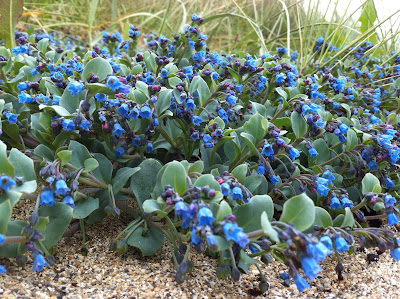Y'know, I wasn't sure that the dates which work for most of the UK would be the ones that produced best results for Orkney. We're a long way from the median point and so far along the bell curve that the word 'rim' wouldn't be inappropriate (admittedly, I am informed that it can be inappropriate, but I don't think that has anything to do with dragonflies. Do not Google it!).
In an effort to tease out the truth from years of accumulated data, I number-crunched a quarter of a century's Odonata records for Orkney to see when the peak flight period would be for the maximum number of species. Surprisingly, for 59 degrees North, it was the last two weeks of July and the first two weeks of August. So much for my hunch, then.
As part of the Orkney Field Club's programme of Summer events, I volunteered to lead two dragonfly walks, one at either end of the week, to encourage folk to take an interest in these fascinating insects, with the longer term aim of increasing the number of records for the various species that breed here. This provides information for the local Wildlife Records Centre (OWIARC), as well as the British Dragonfly Society.
First up, I have to say that despite the dates being bang on for odes, no-one told the Met Office. Neither walk featured anything that could be described as direct sunshine, which is a much-required feature of your average dragonfly walk. Still, undaunted, we managed to record a combined total of six species of dragonflies and damselflies (75% of the Orcadian assemblage) during the week.
Dragonfly Walk 1 - Lyness, Hoy - participants 3
The first walk involved a ferry trip across Scapa Flow to the island of Hoy. I had recced a walk from the ferry port in Lyness up a nearby hill, Wee Fea, so that we didn't need to book a car onto the boat. As well as being good for the event's carbon footprint, this also freed up personal budget for tea and cake.
The day was overcast, not too windy and not too cold, but I have to admit that the lack of sunshine was a concern. Upon reaching the pools on the southern flank of Wee Fea, it took a while to spot our first ode, as everything was hunkered down in the Soft Rush (it helps if one of the attendees is the local whizz on Flora and can identify the vegetation!) growing at the water's edge. But, with a bit of dedication, we were able to find three species of damselfly: Emerald, Common Blue and Large Red. In fact, on the one occasion that the sun almost broke through the clouds, the temperature rocketed up several degrees and the Common Blues were then visible, flying close to the surface of the water, as males searched for mates.
As the group's dragon detecting improved, we also found a number of Black Darter dragonflies, and even had a flyby from a Common Hawker.
 |
| Wee Fea pool. Photo: Our Lass |
 |
| Black Darter. Photo: Our Lass |
On our descent from Wee Fea, we stopped off at another pool, across some rough pasture, managing to find more Emeralds and also some Blue-tailed Damselflies.
With the time approaching for the return ferry trip, we nipped into the Scapa Flow Museum to take advantage of their cafe, but sadly it was closed due to a family emergency. Instead we just had time to investigate the pond next to the museum, and recorded more Blue-tails and a pair of mating Emeralds.
 |
| Russadale quarry pool. |
As we continued to monitor the progress of the Black Darter, it clambered up the rush stem and opened its wings, but this ramped up the amount of buffeting it received from a northwesterly wind, so it closed them again. Satisifed that we could leave it in peace and not worry about surface tension, we sploshed back down the hill (through even bigger puddles), with me absolutely chuffed that we'd seen anything at all.
In Other News...
The big highlight of Orkney's Dragonfly Week had nothing to do with me, and was the discovery of a Black Darter on Eday, a first for the island. Well Done to Eday Ranger Kate Townsend for an excellent find!
















































